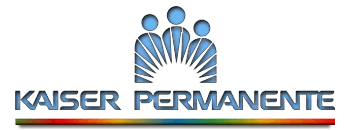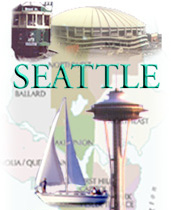| Session 1 :
Wednesday a.m. and p.m. |
Solutions
for Integrating the Enterprise
In a time when many
organizations are facing the challenge of integrating
an array of IS solutions into their computing
environments, no one can afford to miss the chance to
learn what works and what doesn't. In the four-day
forum The Open Group has planned, you'll have a
chance to exchange ideas with leading IS
professionals and learn from the successes other
companies have experienced -- and the mistakes they
have made.
On
Wednesday, March 19, four companies will present case
studies on the efforts underway to integrate their
enterprise computing environments.
Speakers:
 |
Ronald Becker
Williams
Strategic Plannning Specialist
Information Technology Services Department
Kaiser Permanente |
Ronald Becker Williams
will describe how his organization plans to use a
combination of Microsoft solutions, DCE and other
software to address the security and administrative
needs for systems that serve Kaiser members,
hospitals, and corporate offices. He will describe
Kaiser's efforts to develop a DCE-based
infrastructure, construct an environment with secure
single sign-on capability, and integrate with a
legacy environment.
Williams will also
address the status of Kaiser's strategic Project SAFE
- Secure Access for the Enterprise.
 |
Mark Fulgham
Senior Principal Scientist
The Boeing Company |
Mark Fulgham will focus
on end-to-end IS management, the key to multi-vendor
cooperative computing for companies re-engineering
their businesses. He'll describe the ways that Boeing
is managing the increased costs of ownership that
network-centric computing requires and how the
company expects to implement cost-effective
end-to-end reliability measures that had been
considered impossible for decentralized computing
environments.
 |
Steven Jenkins
Deputy Manager and Chief Engineer
Enterprise Information System Project
Jet Propulsion Laboratory
California Institute of Technology |
Steven Jenkins will
address the issues involved in integrating Microsoft
technologies and products into a standards-based
heterogeneous computing environment. His talk will
focus on how JPL is addressing issues such as
enterprise security aspects of COTS applications on
Windows desktops and systems management in a
DCE-based architecture.
 |
Yoichi Tao
Chairman & CEO
SECOM Information System Co., Ltd. |
Secom Ltd. is one of
the largest security service companies in Japan,
providing security support and monitoring for their
clients. The service is provided 24 hours per day
through over 480,000 online network connections.
Network Security is one of the most important issues
for Secom. They have implemented an Intranet using
IntraVerse, a security product using DCE mechanisms,
to protect network security. They have also
integrated this product to build Extranet, a secure
company-to-company network, for some manufacturers.
In both cases, they have not only built a secure
virtual network but also established a system that is
simple, flexible and easy to manage.
 |
Panel moderator:
John Rymer
Giga Information Group |
John Rymer will provide
a short industry overview and chair the full-day
session. Giga was founded in 1995 by Gideon Gartner
and is a provider of IT advisory services.
| Session 2
: Thursday a.m. |
The Integrated Enterprise :
Evolving Strategies in the Age of the Internet
 |
Bob Muglia
Microsoft VP
Server Applications Division |
The benefit of
doing business over the Internet directly
with customers, vendors and partners is a
fundamental business driver that is causing a
profound change in how organizations are
approaching issues of enterprise integration
and application architecture. Today,
traditional client/server systems are
evolving to multi-tier architectures that are
increasingly integrated with enterprise
systems. The combination of standards-based
component software and rapidly evolving
Internet technologies is providing a new
platform for distributed applications. Bob
Muglia will discuss these trends and describe
how Microsoft is evolving its platforms,
tools, and technologies to help customers
gain business advantage and extend existing
enterprise investments.
|
The
Evolution of Object Technology
 |
Annrai O'Toole
Vice President,
Development
IONA Technologies |
CORBA and IIOP
are leading the way in providing a
"lingua franca" for component
integration across diverse programming
languages, operating systems and networks.
This session will discuss the fundamentals of
the CORBA architecture along with its support
for higher level services such as
transactions, security and system management.
The session will also look at the state of
practise in relation to CORBA, i.e. "who
is really doing what with CORBA!"
|
Distributed Objects for Industrial
Automation and Process Control
Within the
industrial control sector, elements of
continuous, discrete, batch, motion, CNC etc.
must increasingly work together and with
enterprise IS. In response,
ObjectAutomation's strategy is to create a
"universal controller" that enables
users to focus on the problem rather than the
technology. Because no one solution provider
can solve every problem, the controller,
rather than being a single product, should be
a framework for accepting pieces created by
experts in specific problem domains. The
company is therefore developing a distributed
object framework that will simplify
integration of objects provided by multiple
solution providers. This will leverage
commonly available tools and be based on an
accepted, and appropriate, object model.
The
presentation will describe the reasons why
ObjectAutomation (OA) selected Windows NT and
DCOM. For one, DCOM supplies far fewer
services than CORBA specifies, and some of
these basic services are not just left
missing, but have no future-oriented
specifications. In this way DCOM offers far
more flexibility to add application specific
services that are basically optimized
versions of the more common distributed
object services.
It will also
look to the future, how this architecture
will take advantage of the control
industry’s skill-base and how object
technology will become prevalent within
embedded systems for intelligent devices.
Systems are becoming too complex to manage in
a rigid, monolithic environment and
distributed objects offer some of the
answers. They also provide ways to better
optimize resources, performance and
availability.
|
The
Evolution of the Desktop
This session will
consider how network-centric computing is becoming
part of the IS structure for business and government
customers. SCO, Microsoft, Oracle and TriTeal will
provide their perspectives and position the various
technologies including Internet/ Intranet, Web, Java,
ActiveX, NC etc.
 |
Chris Scheybeler
Development Director
Client Integration Division
The Santa
Cruz Operation, Inc |
An Architecture
for IT Diversity
The industry
innovates faster than business is willing or
able to exploit its innovation. This leads to
what prophets of the new like to call a
'legacy problem' - a poor description of the
diverse mix of technology and architectures
that is actually created by the pace of
change. In many cases this 'legacy'
technology is the result of strategic
investment which is (a) fundamental to the
business, and (b) architecturally difficult
to integrate with new technologies designed
for a more homogeneous world.
The companies
leading the internet revolution would like
business to start with a clean sheet and
adopt their architecture and technology
across the board. It is left to vertical
integrators and niche developers to provide
solutions that integrate diverse
architectures, but the economics of these
niche markets leads to specific solutions for
specific problems which themselves compound
the diversity they aim to bridge.
The IT
landscape we have inherited lacks an overall
bridging architecture that can accommodate
and integrate the rich diversity of clients,
servers, applications and data that
businesses use today and will continue to
need in the future. Existing middleware
provides piecemeal solutions. Business needs
an architecture.
|
 |
Jon H. Werner
Product Manager
TriTeal Corporation |
The desktop
interface for today's enterprise is based on
technology that is inherently tied to the
underlying operating system and thus to
specific hardware platforms. What MIS and
support organizations have asked for is a
platform neutral, distributed desktop that
provides access to remote applications and
data regardless of the user's location and
hardware device. It is important also to
provide a transition path from today's
desktop solutions to this network-centric
environment that requires minimal training
while maximizing existing hardware and
software resources and at the same time
allows the purchase of Network Computers and
other internet appliances that are becoming
available that help reduce the total cost of
ownership.
|
|





